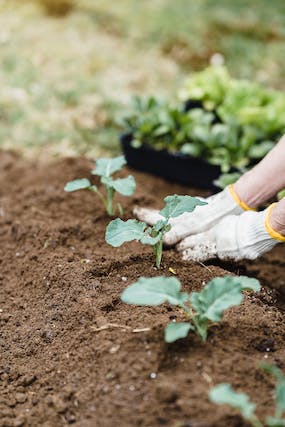
Cultivating Harmony: A Look at Organic Farming in Sustainable Agriculture
Imagine a land where the earth breathes, buzzing with life, a tapestry woven from fertile soil, vibrant crops, and the gentle hum of nature’s symphony. This is the essence of organic farming, a cornerstone of sustainable agriculture, where respect for nature and holistic practices guide the way towards bountiful harvests and a thriving ecosystem.
No longer a fringe movement, organic farming has blossomed into a global phenomenon, embraced by farmers and consumers alike. Its core principles are simple yet profound:
- No synthetic inputs: Organic farming shuns synthetic fertilizers, pesticides, and herbicides, relying instead on natural methods to nourish the soil, manage pests, and control weeds.
- Biodiversity and ecosystem balance: Organic practices promote biodiversity, encouraging beneficial insects, pollinators, and natural predators, creating a healthy and resilient ecosystem.
- Animal welfare: Organic farming prioritizes animal welfare, ensuring access to open spaces, natural feed, and humane treatment.
- Soil health as the foundation: Organic practices focus on building and maintaining healthy soil, rich in organic matter, microbial life, and vital nutrients.
This holistic approach brings a multitude of benefits:
- Enhanced soil health: Organic practices improve soil fertility, structure, and water retention, leading to increased yields and resilience to drought and erosion.
- Reduced environmental impact: Organic farming minimizes pollution, protects water quality, and promotes biodiversity, contributing to a healthier planet.
- Improved food quality: Organic produce often contains higher levels of antioxidants and beneficial nutrients, offering health benefits to consumers.
- Stronger local food systems: Organic farming supports local communities by building direct relationships between farmers and consumers.
Organic farming, however, presents its challenges:
- Yields can be lower: Organic practices may initially lead to lower yields compared to conventional methods, requiring careful planning and adaptation.
- Pest and weed control requires different strategies: Farmers must rely on natural methods, such as crop rotation, cover cropping, and beneficial insects, which require more knowledge and effort.
- Market access can be limited: Organic certification and distribution channels can be complex, especially for small-scale farmers.
Despite these challenges, the rewards of organic farming are undeniable. It offers a path towards a more sustainable future for agriculture, one that nourishes the land, protects the environment, and provides healthy food for generations to come.
Here’s how technology and other approaches support organic farming:
- Precision agriculture tools: Sensors and data analysis can help organic farmers optimize resource use, monitor soil health, and target pest and weed control efforts.
- Agroforestry and regenerative agriculture: Integrating trees and livestock into farm systems can improve soil fertility, enhance biodiversity, and build resilience to climate change.
- Community-supported agriculture (CSA): Connecting directly with consumers through CSAs provides stable income for farmers and fosters a closer relationship between producers and consumers.
Embracing organic farming requires dedication, knowledge, and a willingness to adapt. But for those who choose this path, the rewards are manifold: the satisfaction of working in harmony with nature, the joy of nurturing a healthy ecosystem, and the fulfillment of providing wholesome food for a growing population.